Register for free and continue reading
Join our growing army of changemakers and get unlimited access to our premium content
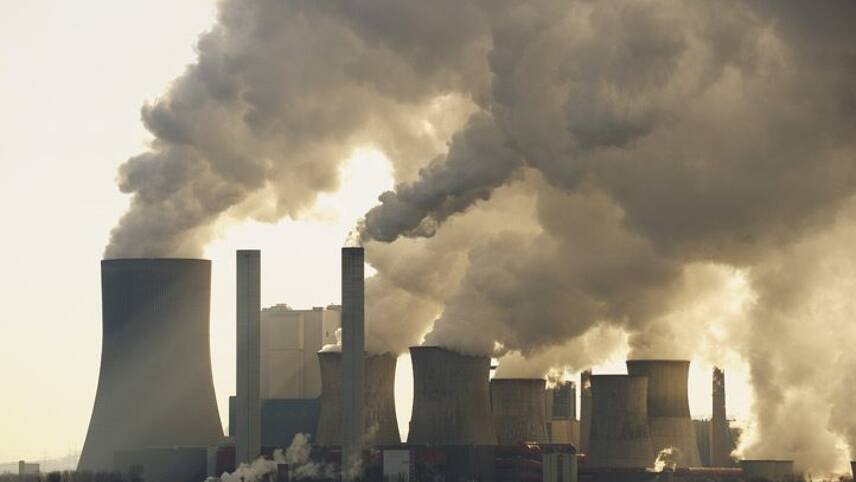
edie has combed through the CCC's 600-page report
The CCC’s new 600-page assessment of the UK Government’s efforts to reach net-zero offer a stark warning that adequate policies and frameworks are not in place to help the UK reach net-zero.
While the UK Government has intervened to create policies and strategies for most major sectors of the economy, the CCC finds “scant evidence of delivery” against them, with major policy gaps also forming.
With the CCC warning that the “likelihood of under-delivery is high”, edie has analysed the 600-page report to provide succinct progress updates on sectors and their approach to net-zero.
The Net-Zero Strategy
Before delving into specific sectors, the CCC also covers the efforts of the UK as a whole to decarbonise in alignment with net-zero.
The report notes that UK emissions are 47% lower than they were in 1990, despite a 4% increase last year – which is attributed to a recovery from the Covid-19 pandemic. Emissions are still 10% lower than they were in 2019.
The UK Government is attempting to accelerate decarbonisation across all areas of the economy, with the flagship Net-Zero Strategy acting as the umbrella that all other policies fall under.
Published in October 2021, the Strategy pledges to “”transforms every sector of the economy”, but the CCC has today warned that it will not deliver the required levels of decarbonisation to reach net-zero.
The CCC anticipates that the Net-Zero Strategy will cover around one-third of required UK emissions reductions just to meet the Sixth Carbon Budget in the 2030s, with another 25% of emissions potentially covered based on a range of external factors. However, the CCC notes that more than 33% of required emissions reductions aren’t covered by existing policies.
The Net-Zero Strategy “contains warm words but little progress” on efforts to reach net-zero, with the CCC noting that the Treasury is yet to explore the costs and benefits of the net-zero transition.
Specifically, the CCC calls for an urgent review of tax strategies and reforms to planning legislation to help accelerate and embed progress to net-zero.
NOTE: All graphs are attributed to the CCC from their latest progress report.
Transport
Surface transport in the UK accounted for 23% of emissions in 2021 – the largest source of emissions – at 101MtCO2e.
The CCC notes that last year’s Transport Decarbonisation Plan (TDP) has acted as a “positive step” for the sector and has built confidence in terms of decarbonisation through additional strategies based on charging infrastructure, phase outs for older, polluting vehicles and the Zero Emissions Vehicle mandate for manufacturers by 2024.
The CCC notes that these “credible” policies will account for more than half of the required emissions reduction and abatement in the sector, but that policy shortfalls do exist, specifically, in regards to not attempting to cap demand in transport use.
The report states that “decarbonisation pathway should not be all about replacing fossil-fuelled vehicles with electric ones, it also offers an important opportunity to change the way people view mobility”. The Government does have strategies in place to promote bus, rail and cycling and walking, but the CCC notes these aren’t as comprehensive as the switch to zero-emission passenger vehicles and HGVs. The CCC notes that the UK will need to limit the growth of road traffic to 2% by 2035 to allow short-term climate targets to be reached.
However, the Government’s decision to funnel £2.4bn into the Roads Investment Scheme 2 looks set to increase road transport demand. Fortunately, the sale of EVs are ahead of the CCC’s own recommendations.
EV sales grew by 12% in the new car market in 2021, while the CCC has recommended an 8% growth. The CCC has also welcomed the creation of 28,000 public charge points across the UK, 7,600 of which were added in the last 12 months. However, the CCC notes that this is still well short of the Government’s commitment of at least 300,000 by 2030. The CCC does believe that the Government has a “credible delivery plan” to scale up in this area.
There is also a word of warning for EV manufacturing in the UK, with the CCC noting that the manufacturers need to be supported by UK battery development, otherwise they’ll manufacture in different countries. Based on current announcements, the UK is likely to have battery production capacities of around 68 GWh/year by 2028, with the CCC claiming that this will need to double by 2040.
Shipping and Aviation
Aviation accounts for 7% of UK emissions at 15MTCO2e, of these emissions, 89% come from international aviation. Shipping accounts for less than 3% at 12MTCO2e.
On aviation, the CCC report notes that despite a fall in emissions (again driven by the pandemic) fossil fuel use per passenger per km has increased by 72% since 2019, despite more than 20 years to improve fuel efficiency.
The CCC notes that the Net Zero Strategy and Jet Zero Strategy “rely heavily on technological changes in aviation as the sector’s contribution to Net Zero and for the removal of the sector’s residual emissions”. This, however, differs from the CCC’s own recommendations, which namely calls for a limit on growth in the sector, which has largely been ignored.
The CCC notes that greater policy clarity is needed to “provide a clear strategy” for decarbonisation alongside low-carbon technology updates. This would need to include a mandate on sustainable aviation fuels (SAF) this year, “with strong safeguards to ensure significant lifecycle emissions savings”.
The report states: “The Government’s announcements on aviation to date have not set any ambition to constrain aviation demand growth through policy, beyond vague proposals on carbon pricing, despite demand measures being one of the few interventions that lowers both CO2emissions and non-CO2 effects from aviation.
“Given the risks outlined above, as well as risks of under-delivery on emissions reductions in other sectors, the Government should actively develop the option to implement policy to manage aviation demand.”
On shipping the Government is aiming to reduce domestic and the UK’s share of international shipping to be reduced by 28% by 2035 compared to 2019 levels.
The CCC claims that emissions from shipping have fallen by 2% annually over a 10-year period, before a 16% reduction in 2020, driven by the pandemic. The CCC estimates emissions will rebound by 4%, but still be 13% below 2019 levels.
Analysis of targets currently suffers from a lack of data and public reports. The CCC notes that the “take-up of both low-carbon fuels and electrification are essentially zero,” but this is partly because they are not reported.
As such, the CCC is calling on the UK Government to commit to the development of a commercial-scale clean maritime cluster, while also taking a “leadership role” to push for a global net-zero target within the 2023 update of the IMO’s initial greenhouse gas strategy.
The Built Environment
Buildings are the second-largest source of emissions in the UK at 20% and 89MtCO2e.
Through the publication of the Heat and Buildings Strategy in 2021, the UK has taken a “meaningful step forward” in terms of the ambition and detail of frameworks in this sector, according to the CCC. However, the CCC also adds that the levels of detail to explain how individual policies around grants for heating and retrofits can contribute fall short of the mark.
The CCC notes that there has been “no sustained” reduction in emissions from buildings in the last decade and that plans to change this are “not yet fully comprehensive or complete and significant delivery risks remain for many policy areas” that are listed in the Heat and Buildings Strategy.
The CCC notes two pivotal areas of action in enabling the sector to reach net-zero emissions.
Firstly, is the need to deliver a massive uptake in low-carbon heating solutions so that at least 600,000 heat pumps are installed annually by 2028 and up to 1.9 million a year by 2035. Despite a 47% increase recorded in annual installations in 2021, just 55,000 low-carbon heat pumps were installed.
The second “pivotal” area for action as noted by the CCC is to ensure that as many buildings as possible reach the Energy Performance Certificate band C bracket by 2035.
The CCC notes that “current policy is insufficient to achieve this goal”, with around two-thirds of relevant buildings currently meeting this goal. Elsewhere, an existing Government commitment to increase minimum energy efficiency standards for the private rented sector to EPC C by 2030 is “over a year” behind schedule.
There is also notable confusion as to how the Government is funding energy efficiency upgrades in this sector, with funding from the Green Homes Grant scaled back in recent months.
The Government was able to catalyse energy efficiency upgrades in more than 150,000 homes in 2021, a 12% increase from 2020. However, the CCC states that this number needs to increase to 500,000 homes annually by 2025 and then one million per year by 2030. The CCC also adds that the availability of Government data only accounts for retrofits from public grants, and that more retrofits may well have taken place.
The CCC also notes that funding to tackle emissions from public buildings will cover less than half of the required upfront costs need to achieve the Government’s target of reducing emissions by 75% by 2037.
The CCC recommends that 50% of heat demand from buildings should be met by low-carbon sources in 2035, with gas boilers phased out in the same year. Additionally, the built environment’s energy demand needs to fall by 27% in the same period compared to 2019 levels.
The CCC has also reflected on the ongoing energy crisis, warning that the existing funding to assist fuel poor homes (totalling more than £8bn collectively) is “unlikely to be sufficient” as it was based on fuel poverty estimates which predate price rises. Indeed, recent research suggests that up to four million additional households could be pushed into fuel poverty in the coming years.
The Treasury has promised a consultation on to tackle pricing reforms, although this is yet to be published. The CCC states that a “clear policy decision must be made before next winter”.
More effort is also needs to ensure that the built environment can adapt to the climate crisis, with better policy frameworks and funding required to address the risk of homes overheating and protection from flooding.
Overall, the CCC made 14 recommendations to Government in this sector in its previous report. Of these, just one has been met – a mandate for fossil fuel boiler phase-outs.
Manufacturing and construction
These two sectors account for around 14% of UK emissions, at 62MtCO2e.
Emissions from the sector were recorded as 19% lower in 2019 compared to 2009, with a further 5% recorded between 2019 and 2020. However, the 5% increase recorded last year was largely attributed to the pandemic, with provisional data for 2021 suggesting that sectoral emissions will rebound back to 2019 levels.
Nonetheless, territorial emissions in the sector in 2021 are estimated to be 3% higher than the Government’s pathway, which is aiming for an emissions reduction of 63-76% relative to 2019 levels under the Net-Zero Strategy.
Reductions have historically been driven by energy efficiency measures, fuel switching and the lightweighting of materials and products.
However, the CCC notes that “planned policies will not deliver enough emissions reductions to meet the Government’s intended emissions pathway for manufacturing and construction”, adding that there is “significant risk” or failure to deliver, based on focusing on nascent technologies such as hydrogen and carbon capture and storage (CCS).
The CCC does note that the “Government’s medium-term decarbonisation ambition in this area has increased substantially over the past two years,”, but that there are plenty of policy gaps that need to be addressed.
Current policies have focused on decarbonisation industrial sites, including a UK-wide race to create the first net-zero industrial cluster. However, the CCC warns that the focusing on industrial clusters “leaves some risk of the UK taking a more expensive decarbonisation route with lower energy security”.
The CCC points out that strategies around CCS are “showing signs of delay”, while the business model for hydrogen deployment is suffering from poor data. On CCS, the Government is aiming to have 2 MtCO2/year of industrial CCS by 2025 and 6 MtCO2/year by 2030, but the CCC claims that progress is at least a year behind schedule.
There is also a risk, the CCC notes, that policy is not focusing to help decarbonise dispersed sites.
The CCC has also analysed the ongoing efforts to create a UK Emissions Trading Scheme that mirrors the EU and is consistent with the Net-Zero Strategy.
Manufacturing emissions account for a large portion of emissions set to be covered by the ETS, but the CCC warns that a one-year delay in the implementation of the ETS cap has created surplus allowances moving forward. The CCC also adds that there is “no clear strategy” for decarbonising small facilities not covered by the UK ETS, which represent 40% of the sector’s emissions.
More broadly across these sectors, the CCC recommends that the Government works to reduce the energy intensity of output by 47% by 2035, reduce the carbon intensity of energy used by 57% by 2035 and reduce process emissions by 65% by 2035.
The CCC is anticipates key manufacturing sectors such as food and drink to adopt energy management systems, stating that adoption should by above 65% by 2028. However, current data from the Energy Savings Opportunities Scheme (ESOS) suggests that the adoption of ISO 50001 energy management systems across sectors is between 5 and 10%.
Indeed, the CCC adds that there is “very little targeted support” for electrification in the sector, which in turn would improve energy security by reducing a reliance on gas.
Of the 15 departmental recommendations in the CCC’s 2021 report, none have been achieved across these sectors.
Electricity
The energy sector accounts for around 11% of UK emissions, at 48MtCO2e.
The CCC notes that sector emissions “have fallen rapidly over the last decade” with the ambition now in place to deliver a fully decarbonised power system by 2035.
Emissions from the sector are currently 8% below pre-pandemic levels recorded in 2019 and 76% below 1990 levels. Overall, more half of electricity generation in 2021 came from low-carbon sources, which has been the primary driver of decarbonisation in this sector.
However, due to a combination of nuclear outages and “exceptionally low windspeeds” emissions from electricity generation actually rose by 10% year on year. Combined with poor data collection, this means that emissions from the sector are 44% above the Government’s Net Zero Strategy pathway for 2021
“The Government has made strong commitments to fully decarbonise the sector by 2035 and increase the amount of low-carbon electricity generation capacity. The key challenge is now to ensure that these ambitions are delivered on, and that available low-carbon electricity can be fully utilised and is sufficiently reliable and resilient” the report states.
With the CCC suggesting that there will be a 50% increase in electricity demand from electrification of transport, heat, and industry by 2035, many market arrangements will need to be redefined to ensure the grid is flexible enough to offer low-carbon demand.
The CCC notes that credible plans are in plans for more than half of emissions reductions required in 2035, but that risks surrounding deployment of renewables and nuclear over the next decade need to be addressed. Flexibility at scale is also lacking definition and focus at a political level, including onshore and offshore network capacity and access and the removal of supply chain bottlenecks.
The key message from the CCC in this sector is that it is lacking an “overarching” delivery plan and strategy, akin to the Transport Decarbonisation Plan. This would “improve visibility and confidence for private sector investors and should be developed as a priority”, the CCC adds.
Agriculture
The agriculture sector accounts for around 12% of UK emissions, at 50MtCO2e.
The UK Government is targeting a broad 34% reduction in emissions from the sector by 2035. However, emissions from agriculture and land use have been “relatively flat” since 2008 with a modest reduction of 3%. Methane is the primary source of emissions, with meat and dairy from livestock a significant contributor.
The CCC notes that plans to decarbonise the sector are highly reliant on the widespread adoption of low-carbon farming practices and productivity improvements. While welcome, the CCC warns that this poses significant risks, namely in relation to training and upskilling and that the approaches are largely voluntary and may not be adopted unless future innovations and policy support incentivise it.
Currently, the devolved administrations have committed to maintain the CAP subsidy system imposed by the EU until at least 2023. The CCC warns that these targets, along with a host of others introduced across the sector “remain largely short-term and incomplete across the UK”.
The CCC therefore calls for increased detail and commitment on delivery incentives and periods, namely for agricultural subsidies and land management.
Indeed, land management is a huge piece of the net-zero puzzle.
The CCC notes that the land use sector “must become a net sink” by the mid-2030s, meaning it should be removing carbon from the atmosphere. This will require a massive uptake in peatland and woodland restoration.
The CCC notes that peatland restoration should reach 67,000 hectares/year by 2025, and in annual tree planting to 30,000 hectares by 2025 and 50,000 hectares by 2050. By 2050, woodland cover will need to increase by 5% to 18% of all UK land area, while 80% of peatland needs restoring.
However, the CCC adds that these land-use change targets are not being met. “This presents a significant risk due to the time profile of carbon sequestration in natural systems,” the report adds.
These facets will all contribute to the UK’s net emissions and capture. In 2020 UK land use had net emissions of 4 MtCO2e, accounting for less than 1% of UK emissions. Net emissions have been virtually flat since 2008 but have decreased by 70% since 1990, the report adds.
The CCC adds that tree planting rates “remain well below” existing Government commitments, and will require an increase of 4,000 hectares annually to reach 30,000 annually.
The CCC notes that around one-fifth of UK land will need to be released from current agricultural practices by 2035, assisting with a wider emissions reduction target of 16 MtCO2e by 2035.
The report also adds that the consumption of meat and dairy and wider dietary shifts can assist with the net-zero movement, but are yet to be supported by legislative frameworks. The CCC notes that there is a reported 5% increase in the number of people consuming plant-based alternatives.
Waste management
The waste sector accounts for around 6% of UK emissions, at 25MtCO2e.
The CCC report notes that overall emissions from the waste sector declined by 5% in 2020 compared to 2019, with the 1996 Landfill Tax continuing to be a key driver in reducing emissions associated with the landfilling of waste.
According to the Net-Zero Strategy, emissions from waste will need to be reduced by around 40% by 2035 compared to current levels. However, the CCC warns that despite the decline in landfilling, progress to reduce emissions has started to be “undermined by increased incineration”.
The CCC is therefore recommending that a 57% reduction in methane emissions by 2035 be delivered alongside a 2% reduction in emissions from energy from waste scenarios. This, the CCC claims, would put the sector on a net-zero trajectory.
The “most pressing” issue for this sector, the CCC states, is to implement the forthcoming reforms to recycling collections, Extended Producer Responsibility and Deposit Return Schemes, which in turn will reduce the amount of waste sent to landfill, reduce emissions, improve recycling rates and reduce fossil-fuel derived streams into Energy from Waste plants.
Carbon Removals
The latest CCC report also analyses the potential for carbon removal technologies, such as Bioenergy with Carbon Capture and Storage (BECCS), Direct Air Capture with Carbon Capture and Storage (DACCS) and wood in construction, in reaching net-zero emissions.
With the IPCC noting that carbon removal technologies will be “unavoidable” to counteract residual emissions from hard-to-abate sectors, the Government has moved to set timebound targets for the deployment of these technologies.
The Net-Zero Strategy has a target of around 5MtCO2e of engineered removals annually by 2030, which is broadly aligned to CCC recommendations. The Strategy also allows for 11-34 MtCO2 of engineered removals annually by 2035.
However, the CCC warns of a distinct lack of speed and progress in this area, with the Government still undertaking evidence-finding research. The CCC claims that these technologies must be scaled up in the early 2030s, with an initial focus on using biomass to support 5 MtCO2 of removals “as a minimum, not a maximum” in 2030.
However, there is currently no deployment of these BECCs or DACCs technologies in the UK, although the CCC points to Drax’s test of CO2 capture from biomass in North Yorkshire as an early pioneer of required pilots.
The CCC adds that it may take four to six years for the UK’s first large-scale removal facilities to become operational.
The CCC also adds that the Net-Zero Strategy’s “relatively high dependence on engineered removals” creates risk in terms of the need for “contingency emissions reductions from other sectors if deployment of engineered removals goes off-track”.
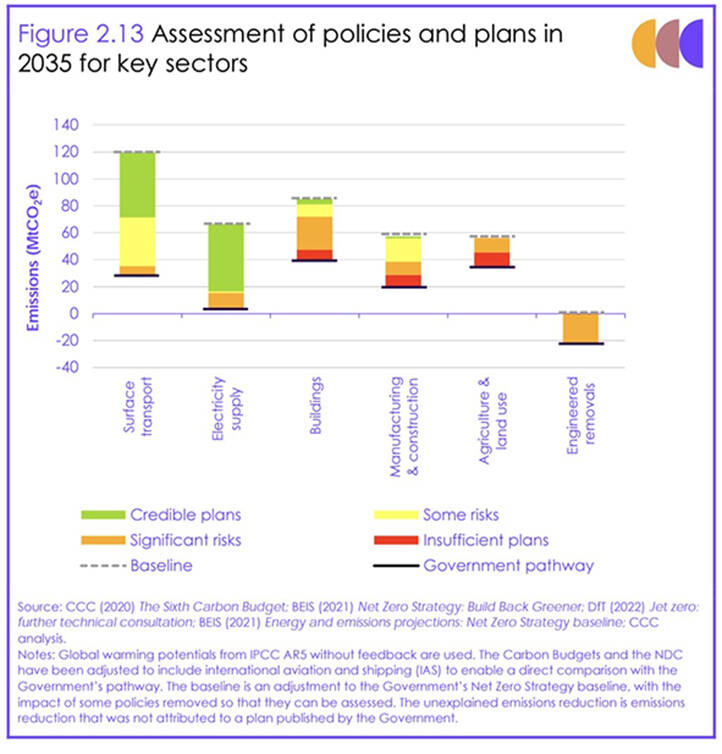

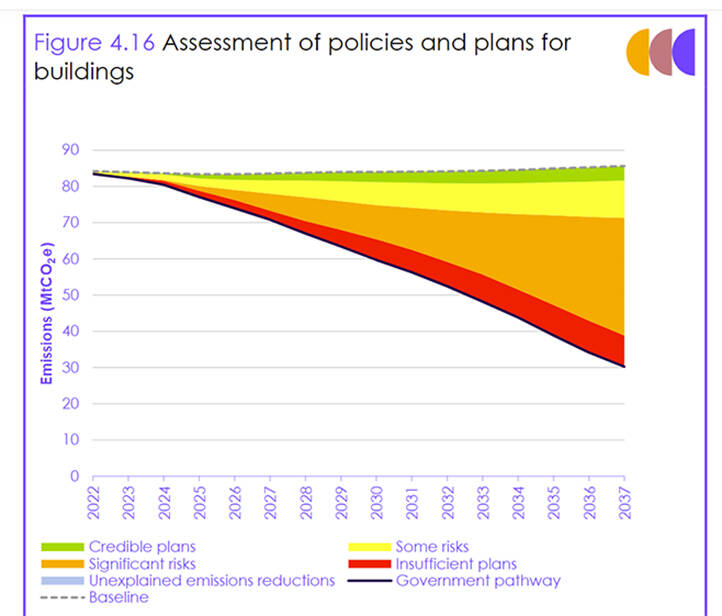
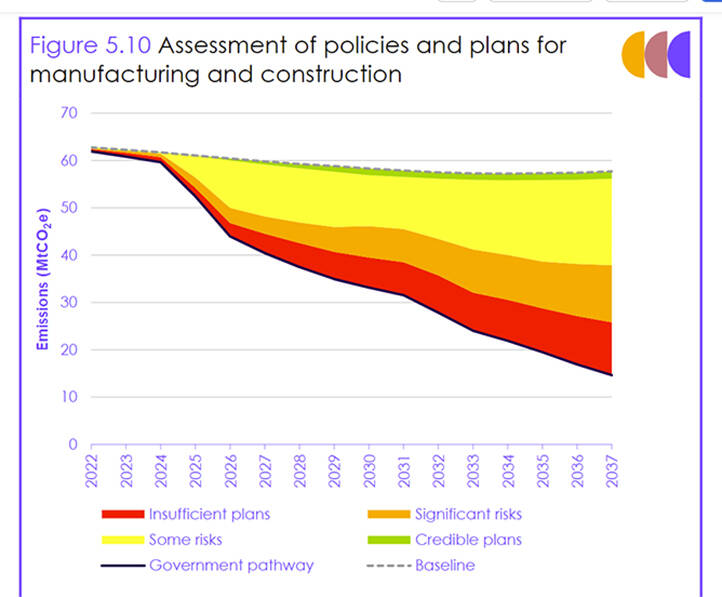
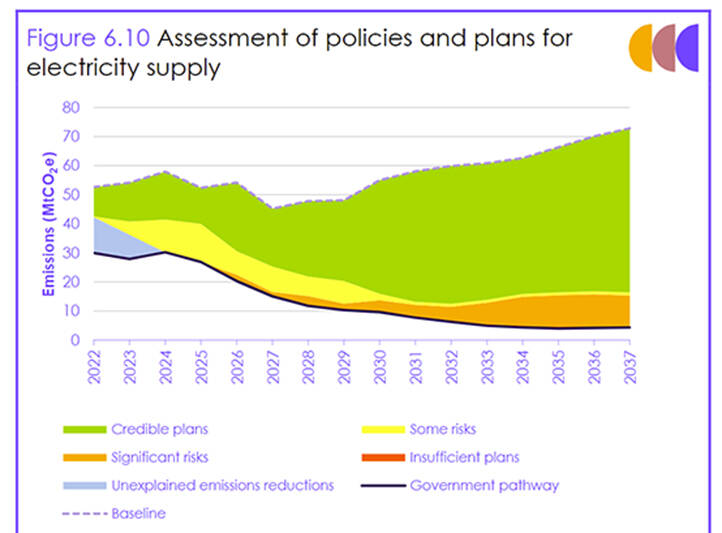
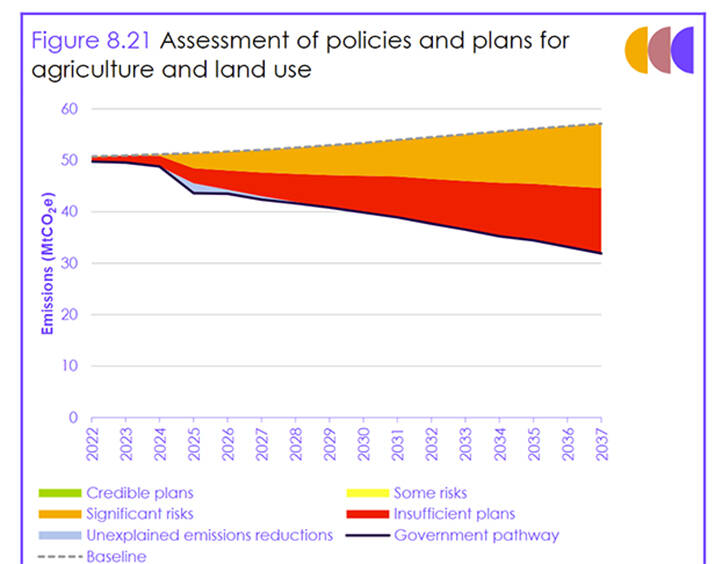



Please login or Register to leave a comment.